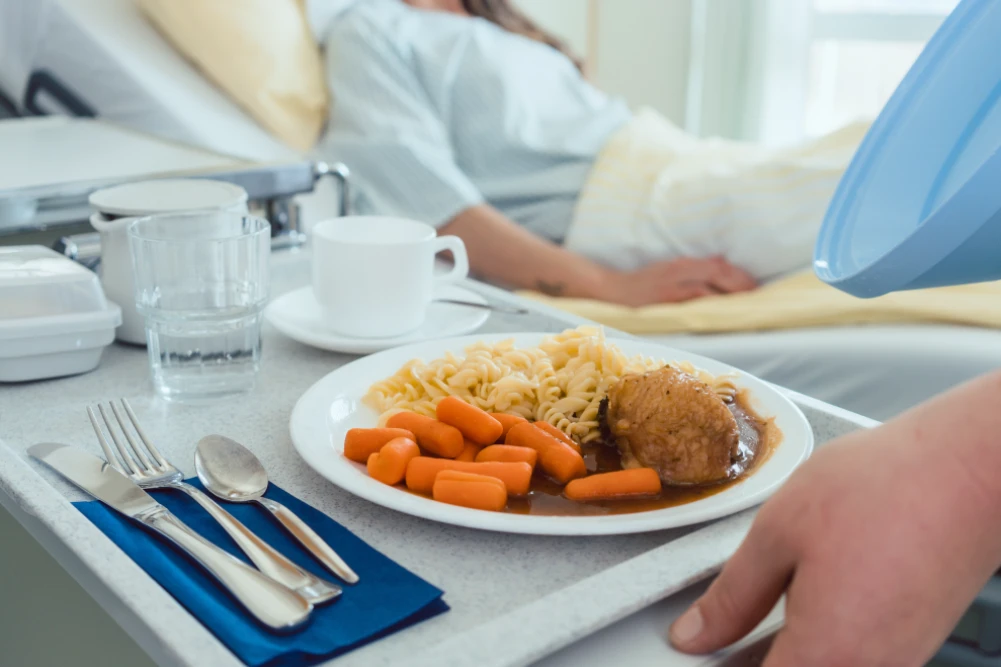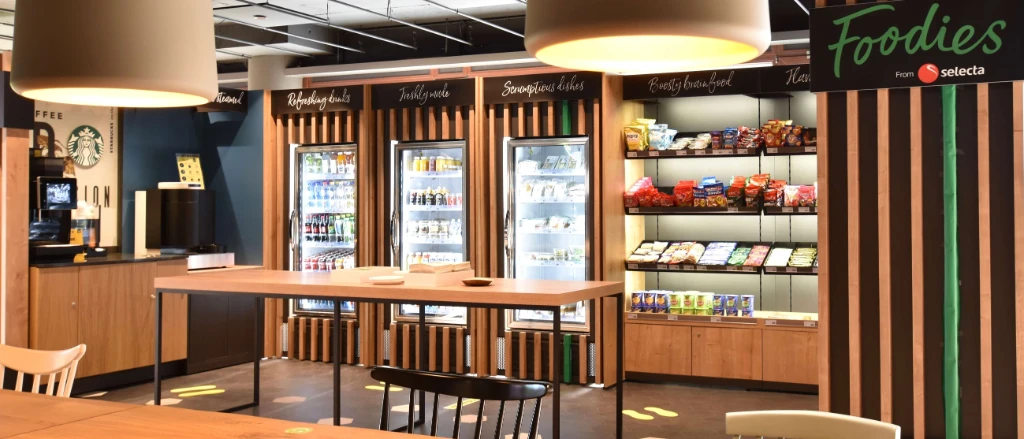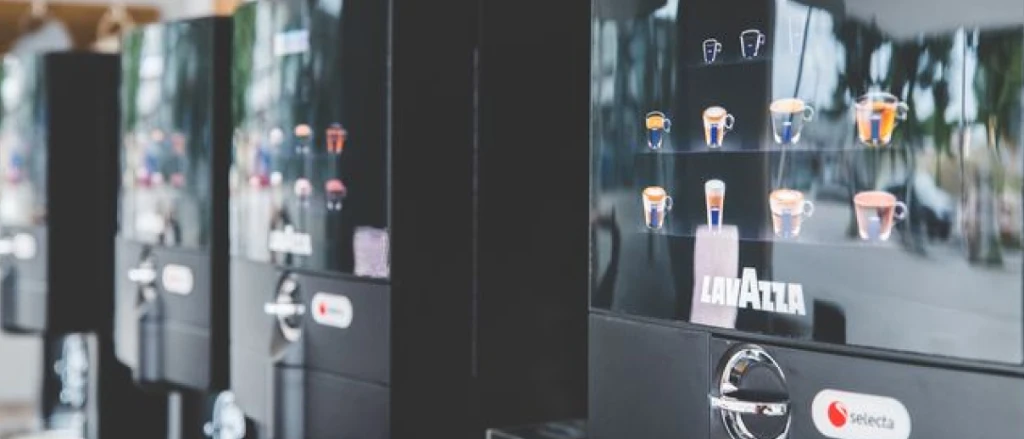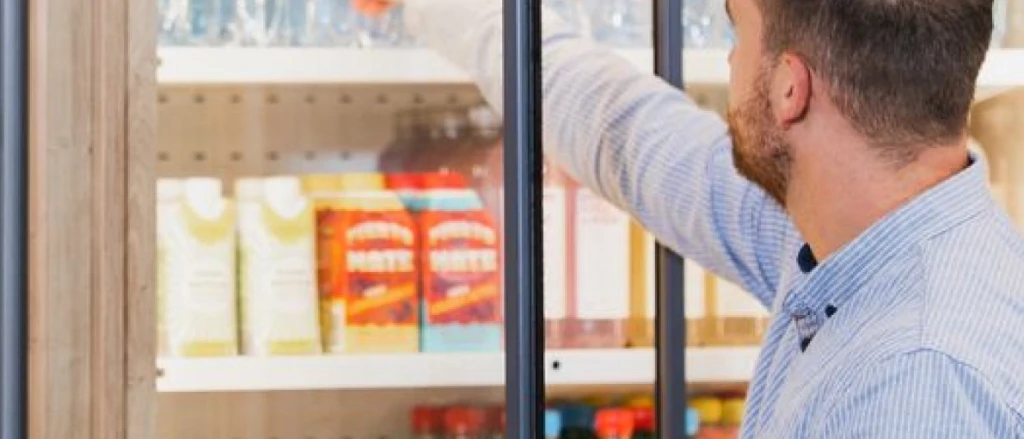Hospital & Healthcare Catering & Vending Guide
Whether it be for patients or those visiting family and friends, modern catering solutions in hospitals and healthcare facilities are paramount for getting quality food and drinks quickly.
Access to quality nutrition plays a vital role in helping ill or injured patients recover and gives visitors a variety of quality dining options during long stays and potentially difficult times.
While budgets, space and facility limitations might mean it’s difficult to make the switch from a manned canteen to a self-service catering solution, doing so does come with a range of benefits for any healthcare facility looking to take that leap of faith.
In this guide, Selecta will cover everything that a hospital, hospice, care homes or other large healthcare facilities may need to consider when integrating self-catering solutions into their catering offering, as well as any health and safety, logistical and sustainability factors that catering managers will need to bear in mind.
Consumer Considerations
Healthcare facilities are incredibly high traffic areas with many people eager to use catering facilities around the clock. This means that a range of solutions need to be offered at all times of day.
The main beneficiaries of a self-service catering solution are:
- Family and friends that are visiting
-
Patients
-
Site staff — this includes nurses, doctors, on-site cleaning staff, security and shop employees
-
External visitors — including inspectors, contractors and regulatory officials

Whether a visitor or a long-standing employee or caregiver, anyone that wants to access self-service catering solutions needs:
Easy access — Hospitals and healthcare facilities generally cover a vast area with high amounts of foot traffic at all times of the day. Healthcare catering managers must think about where to place self-catering solutions so visitors can quickly access food for themselves or ill loved ones from anywhere and ensure they’re never too far from food. This might mean designing a larger, central food hall that’s equidistant to all the wards or creating a network of smaller hubs, so everybody has access.
A wide variety — With a range of patients, staff and visitors coming in and out of a hospital daily, there’s a lot of different needs and tastes to care for. In addition to making sure there’s hot and cold options, children’s meals and a mix of nutritious snacks and treats for consumers, catering managers must also factor in a range of dietary requirements by providing vegan, gluten free and allergen-free options.
Religious and cultural consideration — Hospitals are there to help everybody — no matter what background, culture or religion — so a food and drinks solution should reflect this as much as possible through their service offering. This means any self-service catering solution must have the facilities to offer a range of culturally diverse options — for example, halal meat options or Kosher meals.
Convenience — Not every self-catering option is suitable for every space — for example, you wouldn’t have hot food counters in congested hallways. So, it’s important for catering managers to find spaces that offer the most suitable food and drinks options for the area. For example, simple vending machines are best for corridors as they don’t take up much room and provide grab-and-go options, while full self-service micromarkets are better used in open canteen spaces.
Health and safety considerations
Prioritising health and safety when managing self-service catering solutions is paramount. However, these solutions need to be fully watertight in hospitals to avoid putting vulnerable patients at risk.
Failing to adhere to health and safety regulations mean that hospitals and healthcare establishments not only face legal or financial reprimand, but also breaks the trust between visitors, patients and hospitals that have a duty of care.

Product management — Whether food needs to be chilled or heated, they both have strict rules and regulations regarding their shelf life, storage and rotation. Products need to be stored safely — according to FSA storage regulations to avoid cross-contamination — and regularly rotated to avoid out-of-date or high-risk goods getting to a hospital’s visitors or vulnerable patients.
Setup considerations — When installing a fully self-service catering solution — like a vending machine or large micromarket, it’s important to analyse risks and make the necessary adjustments to comply with building regulations. For example, they must not obstruct fire exits, be placed on a flat surface or secured to a wall to prevent them tipping over, any electrical wiring should be covered, and any exposed heating or cooling units should be insulated to prevent injury.
Signalling hazards — When collecting or heating your food, there is the risk of minor injury, so it’s important that warnings are signposted to make sure people are careful and aware of these risks. For example, catering managers should consider signs around hot food or liquids — like coffee machines and hot food counters — to avoid burns and scalds as well as any other relevant risks.
Having proper documentation — Any self-service machine needs regular maintenance checks to make sure the food is being heated or chilled to the correct temperature to avoid spoiling the food and ensuring customer safety. Maintenance documents and certificates must be up to date to make sure they’re compliant with health and safety standards, so catering managers must plan ahead to make sure they’re checked.
Hospital catering regulations
Not only do food storage and distribution methods need to abide by Food Standards Agency (FSA) regulations, they also need to meet NHS standards.
This means that any self-service solution needs to:
- Adhere to NHS hospital food standards
- Be part of a documented food and drink strategy
- Be led by NHS dietetic advice
- Be managed by a nominated food safety specialist
- Meet regulation 14 of the Health and Social Care act — meeting nutritional and hydration needs of patients and visitors
The law also requires regular maintenance of the machines which includes:
- Gas appliances
- Flues
- Pipework
- Self-service devices
This guarantees that the machines are safe and pose minimal risk to consumers.
Sustainability considerations
As everything moves in a greener direction, any self-service catering solutions need to focus on minimising waste and energy consumption as much as possible.
Catering managers need to consider:
Reducing waste — Any vending machines or self-service micromarkets that serve snacks and meals need to think about how non-recyclable waste can be cut down. This might mean looking at the packaging and recyclable cutlery for grab-and-go options to minimise waste.
Slicing energy — Modern machine features — like compartmental cooling and low-power mode during periods of reduced demand — can help businesses save money and help the environment long term.



Our 50+ team of international selecta product experts will answer your request
Message Sent Successfully
Thank you! Your message has been received. We’ll get back to you soon.
Something Went Wrong
We couldn’t send your message. Please try again, or come back in a moment.


